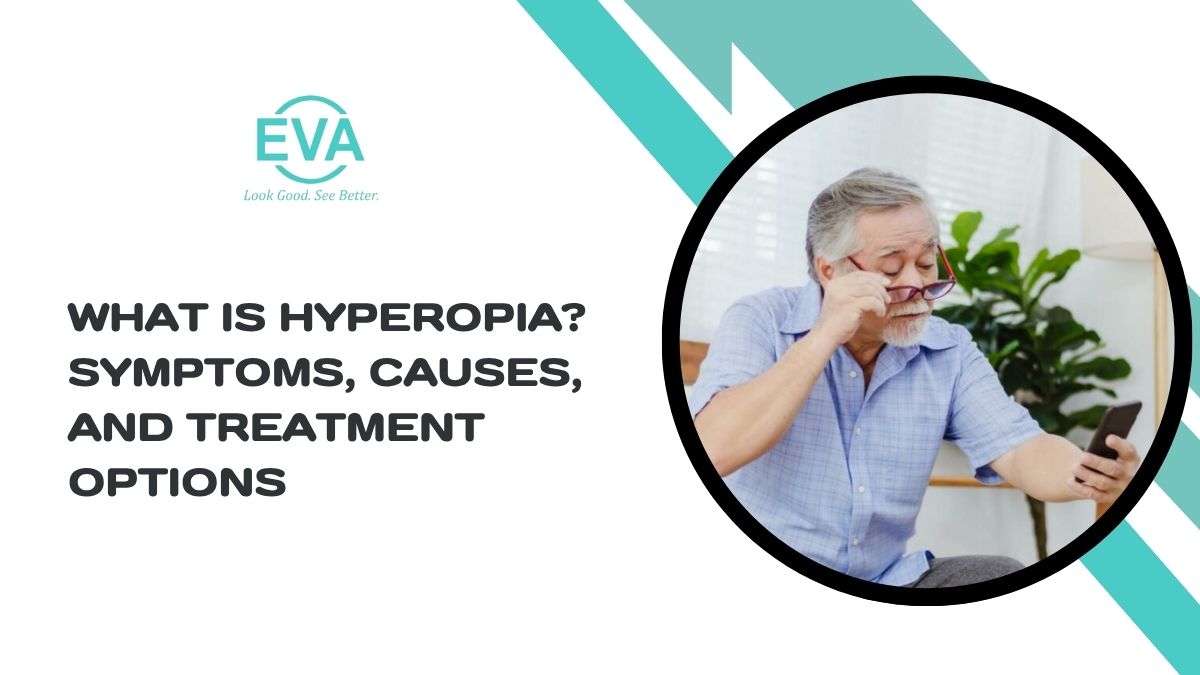What Is Hyperopia? Symptoms, Causes, and Treatment Options

Our eyes are one of the most important organs that help us experience the world clearly. However, when vision problems like hyperopia (farsightedness) occur, even simple tasks such as reading or using a mobile phone can become challenging. Understanding hyperopia — its symptoms, causes, and available treatments — can help you take proactive steps toward better vision. If you’ve been struggling to see objects up close, it’s time to consult an eye specialist doctor in Delhi for a proper diagnosis and treatment plan.
Understanding Hyperopia (Farsightedness)
Hyperopia, commonly known as farsightedness, is a refractive error where distant objects appear clearer than nearby ones. This condition occurs when light entering the eye focuses behind the retina instead of directly on it. As a result, close-up objects like text in a book or on a phone screen may appear blurry.
While mild hyperopia may go unnoticed in young people due to the eye’s natural focusing ability, it often becomes more apparent with age. Visiting an eye specialist doctor can help identify the severity of your farsightedness and suggest the most effective correction method.
Common Symptoms of Hyperopia
Hyperopia can manifest through several visual and physical signs. The symptoms may vary depending on the degree of farsightedness and age. The most common symptoms include:
- Blurry vision for nearby objects such as books, mobile screens, or computers.
- Eye strain and discomfort, especially after reading or doing close work.
- Frequent headaches after prolonged visual tasks.
- Difficulty focusing on close-up objects, particularly in dim light.
- Watery or tired eyes after extended use.
If you experience any of these signs, you should not delay consulting a top ophthalmologist in Delhi to avoid worsening eye strain and potential vision complications.
What Causes Hyperopia?
Hyperopia primarily results from the shape of the eye. It occurs when:
- The eyeball is shorter than normal.
- The cornea is too flat or lacks the proper curvature.
- The lens inside the eye fails to bend light rays correctly.
In most cases, hyperopia is hereditary, meaning it can run in families. Therefore, children of farsighted parents should undergo regular eye checkups at a trusted eye clinic in South Delhi to detect and manage vision problems early.
Diagnosis of Hyperopia
A comprehensive eye examination by an eye specialist doctor in Delhi is the most effective way to diagnose hyperopia. The exam includes:
- Visual acuity test – to measure how clearly you see at different distances.
- Retinoscopy – to observe how light reflects from your retina.
- Refraction test – to determine the correct prescription for glasses or contact lenses.
Early detection not only ensures better visual comfort but also prevents complications such as lazy eye (amblyopia) in children.
Treatment Options for Hyperopia
Thankfully, hyperopia can be easily managed with the right treatment. Depending on the severity of your condition, your eye specialist in South Delhi may recommend one of the following options:
1. Eyeglasses
The simplest and safest way to correct hyperopia. Convex lenses help bend light rays properly onto the retina, ensuring clearer near vision.
2. Contact Lenses
Contact lenses work similarly to glasses but offer a wider field of vision and greater comfort for daily activities. However, proper hygiene is essential to avoid infections.
3. Refractive Surgery
For patients seeking a permanent solution, refractive surgeries such as LASIK, LASEK, or PRK can reshape the cornea to correct hyperopia. Consulting the best eye surgeon in Delhi ensures precision, safety, and excellent results.
4. Lens Replacement Surgery
In severe cases, the eye’s natural lens may be replaced with an artificial intraocular lens (IOL) to achieve clearer vision.
Lifestyle Tips for Managing Hyperopia
While hyperopia can’t always be prevented, adopting healthy visual habits can help reduce discomfort and maintain eye health:
- Take regular breaks from screens using the 20-20-20 rule (every 20 minutes, look at something 20 feet away for 20 seconds).
- Maintain good lighting while reading or working.
- Follow a balanced diet rich in vitamin A, omega-3 fatty acids, and antioxidants.
- Visit your eye specialist doctor in Delhi regularly for routine checkups.
Conclusion
Hyperopia is a common and treatable vision condition that affects people of all ages. Early detection and proper management can help prevent eye strain and enhance your quality of life. Whether you prefer glasses, contact lenses, or surgical correction, consulting an experienced eye specialist doctor in Delhi or visiting a reputed eye clinic is the first step toward clearer vision. With guidance from the top ophthalmologist in Delhi, you can enjoy life with sharp, comfortable, and stress-free sight.

